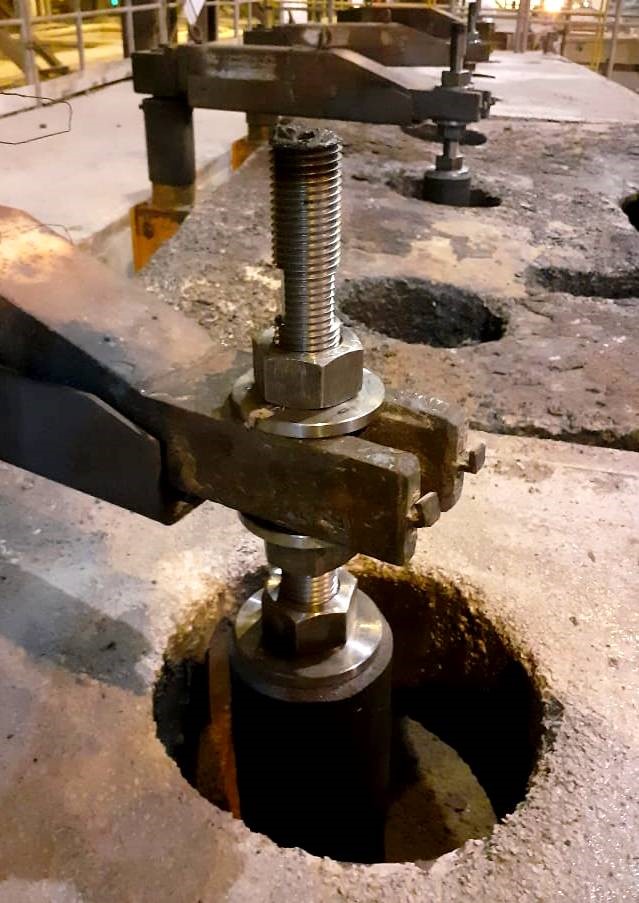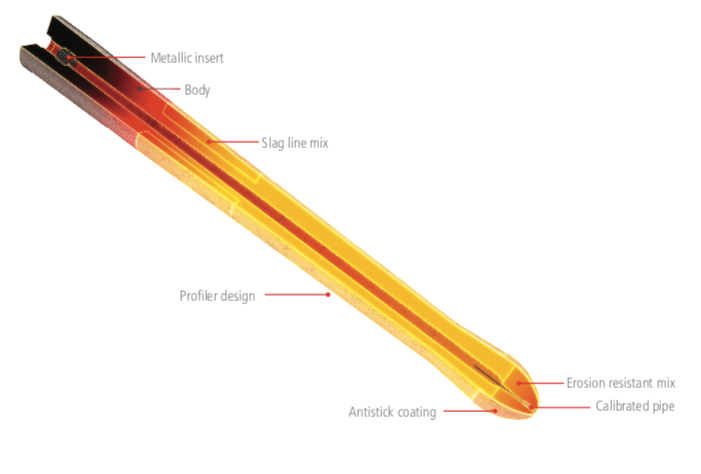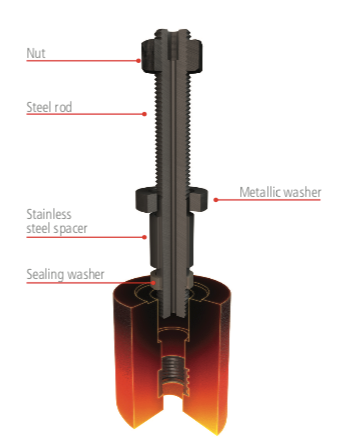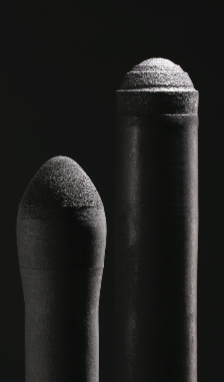The stopper rod mechanism is an integral part of the stopper rod which controls the metal flow from tundish to the mold. The stopper rod mechanism consists of a stopper rod that is connected by an arm to the lever rod. Stopper rods consist of a stopper rod body and a stopper rod tip at the lower end of the stopper rod body. The throttling of the stopper rod can be done manually, semi-automatically or automatically. The manual movement is done with the help of a handle connected to the arm rod whereas in semiautomatic a pendant operates the stopper rod with the help of a program fed and synchronized to the mold level. In the case of automatic mode, an SRM box regulates the movement of the stopper rod. It is electrically powered and low torque and free movement of the wheel is to be ensured at the time of checking in every preparation. The stopper rod tip is basically a frustoconically shaped exterior surface that terminates in a recessed nose.
Special surface coatings and glazing gives resistance against oxidation during preheating and long sequence casts. The gas tightness is ensured by the compression of sealing washers against the refractory body of the stopper by means of a stainless steel spacer having a greater thermal expansion than the stopper metallic rod. All the material and components have been designed to ensure that the sealing washers are always kept under compression at any given temperature. High purity low carbon liners are used on the nose for enhanced performance.



Thermal
Peak Temperature: Being in direct contact with steel, the temperature of the stopper reaches the temperature of the steel. This is high from the refractory point of view and calls for high-temperature-resistant materials (high m.p).
Thermal Shock: The thermal cycling for the working lining is low being in contact with steel throughout the casting duration. The preheating of the tundish protects it from thermal shock as well. But in certain cases like drop-in bath level at the time of ladle change over and heat delay in connecting the subsequent heats can give rise to some sort of thermal shock. Although the cases are rare. Thus thermal shock remains a minor factor for the stopper rod.
Mechanical
Impact: The tip suffers from impact when it bangs with the nozzle. The impact can be very high depending on the operation practices followed, especially in manual stopper rod mechanism during mold filling at the start of casting and throttling to clear chocking in nozzles.
Abrasion: The abrasion is dependent on the throughput rate of the steel flow and the gap between the stopper rod and nozzle which generates the velocity across the gap. Thus the abrasion is somewhat an important factor for the ladle stopper rod mechanism.
Applied stress: The stopper rod is free to grow during the time of preheating or during the casting times. So the applied stress is low.

Chemical
Dissolution: Wear by dissolution depends on the chemical compatibility of the slags with bricks. The correct choice is to be made to match the wide range of chemistry in the tundish. Alumina or spinel based material is the preferred choice.
Penetration: Penetration is caused by low viscosity metal/ slag or highly wetting metal/slag penetrating into porous refractories. Tundish slag penetrating the slag line area of the stopper is a crucial factor.
Thermo- Mechanical
Strain of thermal expansion: The stopper rod is free to grow during the time of preheating or during the casting times. So the applied stress is low.
Chemical Mechanical and thermo mechanical chemical
Spalling of the penetrated zones- The stopper rod tip is the key wear area with the simultaneous action of abrasion, impact and chemical attack.
Choice of material
Stopper rod is usually made up of an Alumina-carbon mix of 20-25% C (94% graphite) and 70-75% alumina (tabular, fused alumina with mullite additions) and sometimes 0-5% zirconia. It will contain antioxidants (like Al, Si) to protect the carbon.
The tip being the key wear area contains zirconia or alumina for normal grade and magnesia for calcium grades.
The slag line is designed to match the tundish slag composition. It is made up of alumina or zirconia or magnesia with a carbon mix. The body is made up of alumina carbon but does not contain zirconia.




